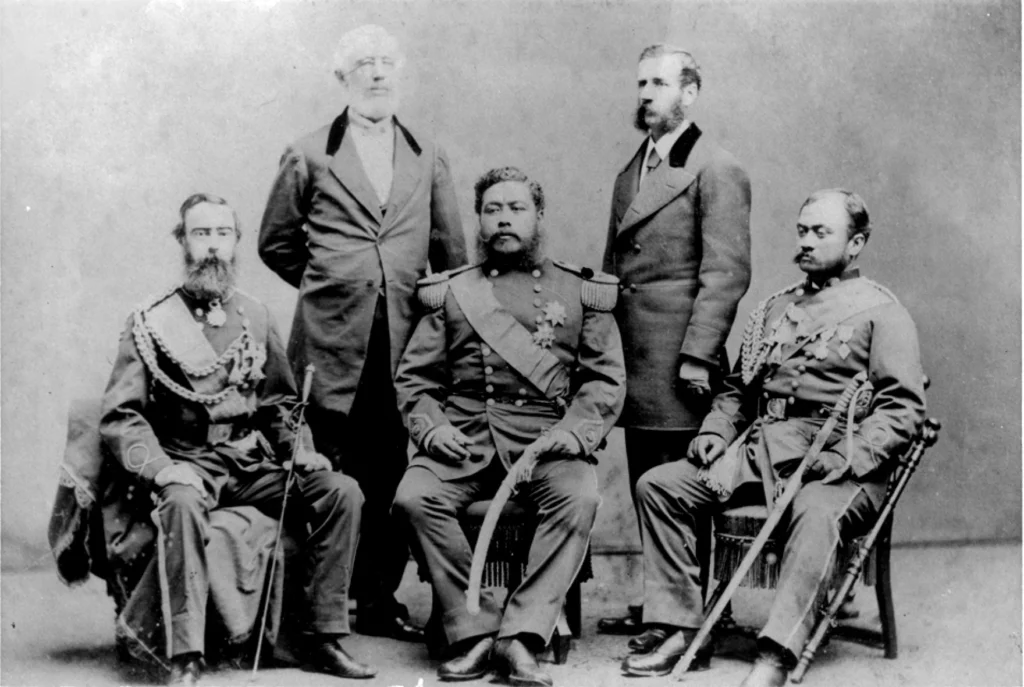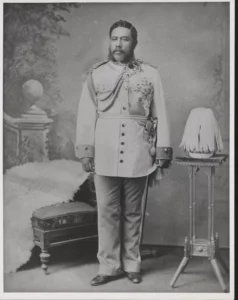15 Apr 2025 – Boeing is feeling the heat from the escalating U.S.-China trade war. The aerospace company’s stock was down 2.4% today after China ordered its airlines to halt jet deliveries — another fallout from President Donald Trump’s latest tariff announcement.
Long before Trump began using tariffs as a bargaining strategy, the Kingdom of Hawaiʻi wrestled with the question of how to use tariffs. In fact, tariffs played a central role in the overthrow of the monarchy.
Historian and author Ronald Williams Jr. spoke with The Conversation about the long history of tariffs in Hawaiʻi, which he says charted the path to annexation.
In the ʻŌiwi Wale, or the native-only period, there was a system of taxes, Williams explained.
“There were ahupuaʻa… That literally was an ahu, that was an altar, where the puaʻa, the pig, was given. And it was symbolic of the taxes that were given to the mōʻī, or the king, as he circled the island every year,” Williams said. “There was a spiritual side of this also, though, it wasn’t just economic. This was the people giving taxes and giving their best fish and giving their best pig and so forth to their aliʻi so that their aliʻi could bargain for them with the gods. It wasn’t this kind of European style of government and taxes and so forth.”
As Hawaiʻi moved into the Kingdom Period, trade opened up after France and England signed the Anglo-Franco Proclamation in 1843. This declaration officially recognized the Hawaiian Kingdom as an independent, sovereign nation. After this, the economy of Hawaiʻi takes off.
“I found a broadside in the Hawaiʻi State Archives that was listing the currencies that were accepted as legal currency in Hawaiʻi,” Williams said. “This was 1848 and there were 151 currencies. I didn’t know there were 151 currencies in the world, but all of that type of economic activity is going on through Hawaiʻi. So they kind of have to make a decision, do we tax the people to gain revenue? Or do we tariff goods that are coming into the kingdom? And they really side on that side of tariffs, trying to keep taxes relatively low for the people, and that’s what pays for the roads and the hospitals. So we start to see the tariff as kind of a way to support the economy of the Kingdom of Hawaiʻi without taxing the people too heavily.”
In the 1860s, protests against taxes sparked conversations about increasing tariffs even further. Meanwhile, the powerful sons and grandsons of Christian missionaries began pushing not only for tariffs on incoming goods, but to remove the tariff on Hawaiʻi-grown sugar going to the United States as a foreign good.
“The Treaty of Reciprocity that [King] Kalākaua signs in Washington in 1874 takes tariffs off of certain goods from the United States and certain goods from Hawaiʻi. So it’s really just a ‘We won’t tax your sugar and your corn and your coffee and so forth’ on both sides. So it does enrich those folks in Hawaiʻi, but it doesn’t yet give away Pearl Harbor. But the key is that it has an end date, and so moving into the 1880s, we start to see this nervousness by the sugar companies, ‘We really need that tariff taken off again, to renew the treaty.’ And the United States says they don’t want to renew the treaty. They say it’s not a good treaty for us. It’s unfair on our side and so forth. To renew this, we’re going to have to have Pearl Harbor.
“So in 1887 they literally have a coup, and the sons of the mission and the local white businessmen get together… And they sign an oath to support the white community of Honolulu against the native monarchy. They get a small militia under their control, and they literally enact a coup on July 6, 1887, taking over the government, making the mōʻī, the king, basically a figurehead, and they renew that Treaty of Reciprocity with the United States.”
As for today, Williams said, “You look and see the news and you see this idea of using tariffs as a sword to get other countries to bend to our will, and that’s exactly what had happened here in Hawaiʻi. Once we put all of our desires or all of our faith in the use of tariffs, then the Kingdom was lost.”
____________________________________________
Williams works at the Hawaiʻi State Archives, where many of the documents he referenced can be viewed.


